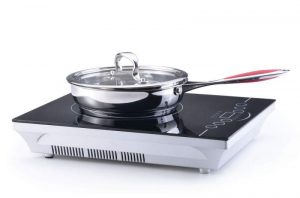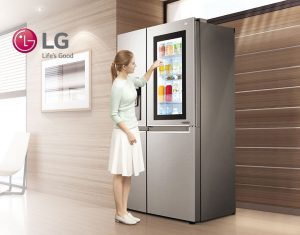Best Microwave Ovens in India in 2022 reviews and buying guide
- Best Microwave Brands in India in 2024
- Best Microwave Ovens in Indian in 2024
- How does a microwave work?
- How do conventional ovens work?
- Energy Efficiency of microwave and comparison with gas stove
- Difference in usage of microwave and conventional oven
- Cooking and energy efficiency
- Role of cavity in a microwave oven
- Types of cavities in a microwave oven
- Ceramic cavity vs stainless steel cavity
- Other research around myths and realities related to microwave ovens
- Source of Information
Indian kitchen, which at one time had very less electrical appliances, is now getting loaded with appliances of all kinds. Ovens: electric or microwave are increasingly getting into Indian kitchen and making their presence felt. But many a times people get confused between the two and do not understand which one to buy. It is important to note that although a lot of activities can be done in both of these types of ovens, there are few things that can be done well only in either one of them. Also efficiently choosing the appliance can also help save some electricity. So let’s first look at best microwave ovens to buy in India in 2024 and then look at the buying guide.
- Best Microwave Brands in India in 2024
- Best Microwave Ovens in Indian in 2024
- How does a microwave work?
- How do conventional ovens work?
- Energy Efficiency of microwave and comparison with gas stove
- Difference in usage of microwave and conventional oven
- Cooking and energy efficiency
- Role of cavity in a microwave oven
- Types of cavities in a microwave oven
- Ceramic cavity vs stainless steel cavity
- Other research around myths and realities related to microwave ovens
- Source of Information
Best Microwave Brands in India in 2024
Here is the list of some of the popular brands of microwave ovens in India in 2024:
- Bajaj
- Samsung
- LG
- IFB
- Panasonic
- Whirlpool
- Godrej
Out of these LG, Samsung and Panasonic are the most popular ones.
Best Microwave Ovens in Indian in 2024
Here are some good models on Amazon:
 Samsung 28 L Convection Microwave Oven (CE1041DSB3/TL, Black, SlimFry)
Samsung 28 L Convection Microwave Oven (CE1041DSB3/TL, Black, SlimFry)
 Samsung 23 L Solo Microwave Oven (MS23F301TAK/TL, Black)
Samsung 23 L Solo Microwave Oven (MS23F301TAK/TL, Black)
 IFB 30 L Convection Microwave Oven (30BRC2, Black, With Starter Kit)
IFB 30 L Convection Microwave Oven (30BRC2, Black, With Starter Kit)
 Bajaj 1701 MT 17L Solo Microwave Oven, White
Bajaj 1701 MT 17L Solo Microwave Oven, White
 IFB 20 L Convection Microwave Oven (20SC2, Metallic Silver, With Starter Kit)
IFB 20 L Convection Microwave Oven (20SC2, Metallic Silver, With Starter Kit)
 Samsung 23 L Solo Microwave Oven (MS23J5133AG/TL, Healthy Cook, Black)
Samsung 23 L Solo Microwave Oven (MS23J5133AG/TL, Healthy Cook, Black)
 Panasonic 20L Solo Microwave Oven (NN-ST26JMFDG, Silver, 51 Auto Menus)
Panasonic 20L Solo Microwave Oven (NN-ST26JMFDG, Silver, 51 Auto Menus)
 IFB 20 Litre Solo Microwave Oven (20PM-MEC2) White
IFB 20 Litre Solo Microwave Oven (20PM-MEC2) White
 Samsung 28 L Convection Microwave Oven (MC28A5013AK/TL, Black, Curd Anytime)
Samsung 28 L Convection Microwave Oven (MC28A5013AK/TL, Black, Curd Anytime)
Now let’s look at some basic things about Ovens and understand how to buy a microwave oven.
How does a microwave work?
The core to working of a microwave oven is a “Magnetron” that generates waves of electromagnetic energy. This electromagnetic energy, when it reaches water molecules, charges them, thus in turn heats them. On the contrary when it reaches a metallic surface, the metallic surface reflects them. For all “microwave friendly” containers, the waves pass through them without heating the container itself, but heating only the food kept in it.
How do conventional ovens work?
Conventional Ovens are appliances with enclosed space with metallic elements at the top and bottom. Electric current flows through the metallic elements to heat up the element and in turn the enclosed space and cook food. The thermostat in the oven (if there is one) measures the temperature and adjusts the current through the element to maintain the temperature. Additionally some ovens (convection) also have fans that uniformly distribute the heat. These ovens with fans are much more efficient than conventional ovens as they uniformly distribute the heat and thus can help in reducing the thermostat temperature.
A typical Oven is between 1000 and 2000 watts, but it does not consume all of it during its complete operation. Its electricity consumption depends on the temperature set in the thermostat. Electricity consumption will also depend on the size of the oven and a bigger oven will consume more electricity. We at Bijli Bachao did a test on a small Oven while baking a cake and we found that it took 0.2 units for baking a cake in 30 mins (at 150 degree centigrade). The oven was rated 1200 watts.
Energy Efficiency of microwave and comparison with gas stove
As a microwave heats only the food and not the container & surrounding air, one would assume that microwave would be quite efficient in using energy/electricity. Add to that the microwave consumes very less time to heat the food as compared to a gas stove, so this should build a strong case for energy efficiency of microwave ovens. As one would believe that quick bursts of electricity would heat the food.
To make a comparison of gas stoves with ovens, US DOE (Department of Energy), did some tests to evaluate energy efficiency of various cooking methods, and what they found out was interesting:
|
Gas |
Microwave Oven |
Electric Heating |
Induction Cooking |
|
|
Heating Efficiency |
40% |
55% |
74% |
84% |
Although slightly more efficient in using energy as compared to Gas, microwave technology is not as efficient as electric heating or induction cooking. The “Magnetron” that generates the electromagnetic waves does consume a lot of electricity, which makes microwave less efficient as compared to other electric cooking methods.
In a previous article on Cooktop Comparison (link), we compared Gas Stoves with Electric Heating and Induction Cooking on heating costs, and we found that all these cost almost the same. So if Microwave ovens are less efficient as compared to Electric Heating, then it will certainly be costlier to use them than using Gas stove.
Difference in usage of microwave and conventional oven
Both the types of ovens can be used for heating but have very different purposes. Conventional Ovens are good for any cooking that requires baking or browning of food. A microwave does not bake or brown properly but is good for re-heating, roasting and almost all other kind of cooking. Microwaves are a good replacement for conventional cooking rather than to all types of cooking requiring ovens (like baking).
Cooking and energy efficiency
Electricity contributes very little to the energy consumption in a kitchen. Cooking gas is a major component and we will discuss more on that in a future post. But we would certainly like to point out a few things over here:
- A microwave consumes lesser energy than a cooking gas, but cost of electricity is higher than cost of gas.
- Compared to conventional oven microwave oven uses 75% less electricity for activities like cooking a potato.
Role of cavity in a microwave oven
A microwave oven consists of a magnetron which produces microwaves when electric current passes through it. These microwaves penetrate the food articles kept inside and agitate the water molecules inside the food (the moisture inside the food). As a result the water molecules start vibrating thus getting heated up. That is why it is said that a microwave oven heats up the food from the “inside out”.
Since the heat is being produced due to electromagnetic waves, so it is important that it is ensured that the waves do not leak or escape from within the interior of the oven as it would contribute to the unnecessary wastage of electricity and also cause a health hazard. This is where the cavity plays an important role.
Many people tend to think that the only purpose of the cavity is to provide a place to keep food inside the oven. Although the cavity of a microwave oven necessarily does that, it also provides protection against the leaking of the electromagnetic waves from the inside of the oven. Since an oven has an enclosed interior, the microwave produced by the magnetron keep getting reflected again and again within the interior of the oven. In such a case, if the material of the cavity is not sturdy enough to facilitate such continuous reflection of microwaves, then the waves might leak away and escape outside. That is why the cavity of a microwave oven plays a very important role in not only the electricity consumption of the oven, but also in preventing the waves to leak.
Types of cavities in a microwave oven
The cavity (the place where you keep the food items) of a microwave oven is typically of two types:
1. Stainless steel cavity
2. Ceramic enamel cavity
To start with, it is important to note that the food articles kept in the microwave oven are heated up due to the electromagnetic waves produced by a magnetron, which heat up the water molecules inside the food articles, thereby heating them up. The internal walls of the cavity prevent the microwaves from leaking to the surroundings.
Ceramic cavity vs stainless steel cavity
Ceramic cavity in microwave ovens
Pros:
1. Ceramic cavity surface is non-sticky which means it is easy to clean.
2. Ceramic cavity adds a lustre to the surface and therefore looks good.
3. Certain brands claim to have an “anti-bacterial coating” to the surface of the microwave oven which prevents any bacterial attack.
Cons:
1. A microwave oven having a ceramic cavity will take longer to heat up the food articles kept inside it.
Stainless steel cavity in microwave ovens
Pros:
1. Stainless steel cavity facilitates better heating of the food articles inside the microwave oven as steel is a good conductor of heat.
2. Stainless steel provides better protection against leakages of the microwave ways.
Cons:
1. Stainless steel cavity does not offer a very good protection against scratches.
2. The microwave ovens with stainless steel cavity are a bit expensive.
Other research around myths and realities related to microwave ovens
Although it may be slightly costlier to use microwave ovens, but one cannot take away the benefit of ease of using microwave ovens. There are certain myths about using microwave ovens, which we would like to clarify on:
- Microwave ovens destroy nutrients in food: As per Harvard Medical School (link), this does not happen on using microwaves. The electromagnetic waves only heat up the water molecules in food causing the whole food to heat up. But they do not destroy nutrients in food.
- Standing near a microwave is injurious to health: People believe that microwave ovens produce radiations that are harmful. Considering how long microwaves have been in the market, one would think that any concerns about their safety would have been resolved long ago. Microwaves have metallic body all around and a metallic mesh on the door that reflects the microwave radiations to keep them inside. As per US FDA there is no documented case of radiation injury due to microwave ovens (link)
Certain things to take care of while using microwave ovens:
- Only use microwave friendly containers in microwave oven: Certain plastics release harmful chemicals when exposed to microwave radiation. So it is always better to use “microwave friendly” containers with a microwave oven.
- Avoid using metallic containers in microwave oven: Although metals deflect microwave radiations and in general do not get heated up, but at times microwaves can cause electric field at the corners of a metallic container, causing occasional sparks. Thus it is better to avoid using metallic containers in microwave.
Source of Information
Food and Drug Association website
Home Energy Magazine website
American Council of Energy Efficiency website
Scientific American website
Ehow website
http://en.wikipedia.org/wiki/Microwave_oven
http://www.arpansa.gov.au/radiationprotection/factsheets/is_microwave.cfm
About the Author:
Abhishek Jain is an Alumnus of IIT Bombay with almost 10 years of experience in corporate before starting Bijli Bachao in 2012. His passion for solving problems moved him towards Energy Sector and he is keen to learn about customer behavior towards Energy and find ways to influence the same towards Sustainability. More from this author.














